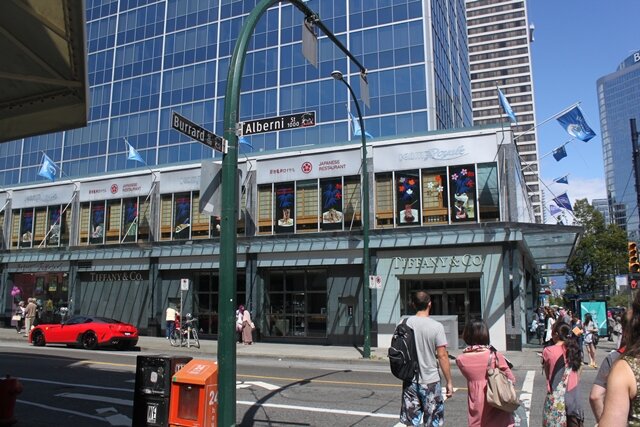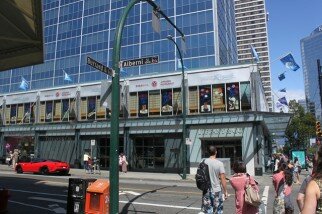When the news broke that Steve Jobs was stepping down as CEO of Apple, there was shock at first, followed swiftly by a barrage of encomiums. There’s a lot to praise about Jobs, but the internet was, I think, up to the task.

More than once, though, I saw people on Twitter wondering what Mike Daisey would say.
Honorary Seattleite Daisey, of course, is the monologuist who created The Agony and the Ecstasy of Steve Jobs, which he’s still performing. It’s coming to The Public Theater in October. (Nearer to home, Daisey is coming to Portland for TBA this September, to present a 24-hour monologue.)
Agony is, among other things, an interrogation of the tendency to personalize the corporation and corporatize personal responsibility. On the one hand, after his resignation, people apparently needed to be reminded that Apple employed other executives, as if Jobs was down there assembling every Mac and iPad. On the other, did anyone expect Steve Jobs to end Apple’s outsourcing? Does anyone blame him, in any way, for the suicides at Foxconn?
Daisey hasn’t blogged his thoughts (yet). But Michael Moore has. Specifically, MichaelMoore.com is home to this admonitory post: “Remembering Steve Jobs’ Record on Workers’ Rights“. Author Elk writes, pointedly, “While Jobs’ designs for computers may have put humans at their center, working conditions for Apple’s workers put profits at their center.”
Lest you think that only rabble-rousers care about working conditions, remember that back in February, Redfin’s Glenn Kelman wrote this compelling post: “This is really bad, someone should be in China driving this.” (Kelman’s blogging is often compelling for its insight–here it’s the bluntness of his diagnosis of values that’s outstanding.)
You pay more for an Apple product because of how it makes you feel when you buy it: as if you’re striking a blow for creativity over corporatism, even fascism. That feeling is Steve Jobs’s greatest achievement. It probably accounts for a third of Apple’s market value. So when we try to convince ourselves that Apple doesn’t care what we think of Foxconn, we’re hoping to be more powerless than we are.
Daisey remains an invested Apple customer. His August 18 post is simply a quote from macintouch.com on the lousiness of the Mac OS Lion. Scott Boone wrote: “I’ve been pretty quiet about it, but Lion is a mess. I’m finding bugs almost daily; some are small, some are real head scratchers how they got thru QA.” (I can confirm that Lion’s RAM usage is much more prone to spinning-beachball-creation than Snow Leopard.)
But you can’t say Daisey has been quiet on the subject of Jobs; his monologue says what he wanted to say. That is, I think, the same point that Kelman was trying to make. Steve Jobs didn’t invent our ability to ignore working conditions in far-off lands. He just showed us that it’s a user issue.






 COAST IN FOR LUNCH
COAST IN FOR LUNCH And if you prefer your seafood warm, consider the signature seafood platter with halibut, wild sea tiger prawns, sockeye salmon, and Qualicum scallops. The seafood is piled on a plate with seasonal vegetables, and comes with a side bowl of potato gnocchi.
And if you prefer your seafood warm, consider the signature seafood platter with halibut, wild sea tiger prawns, sockeye salmon, and Qualicum scallops. The seafood is piled on a plate with seasonal vegetables, and comes with a side bowl of potato gnocchi. One of the main sensual attractions of Alberni Street has long been Agent Provocateur, but the store unfortunately closed in the past month. (You can still see their incredible ad campaigns and shop for lingerie online, or visit one of the boutiques in other major cities in the U.S. and around the world.) Instead, you’ll have to settle for the Calvin Klein Underwear store just next door to buy sweet surprises.
One of the main sensual attractions of Alberni Street has long been Agent Provocateur, but the store unfortunately closed in the past month. (You can still see their incredible ad campaigns and shop for lingerie online, or visit one of the boutiques in other major cities in the U.S. and around the world.) Instead, you’ll have to settle for the Calvin Klein Underwear store just next door to buy sweet surprises. And if you can make it there in the next month, go.
And if you can make it there in the next month, go. THIERRY MAKES (AND TAKES) THE CAKE
THIERRY MAKES (AND TAKES) THE CAKE How to decide? You’ll have to do a little window shopping. Like a jewelry store, the showcases are one level only—and they’re temperature controlled for their specific contents. Will you have some of Thierry’s specialty chocolates? A cake or a tart? (Pictured is the lime mousse cake.) Or maybe a sampling of the captivatingly colorful macarons? (They’re gluten-free!) This only scratches the surface of what’s available.
How to decide? You’ll have to do a little window shopping. Like a jewelry store, the showcases are one level only—and they’re temperature controlled for their specific contents. Will you have some of Thierry’s specialty chocolates? A cake or a tart? (Pictured is the lime mousse cake.) Or maybe a sampling of the captivatingly colorful macarons? (They’re gluten-free!) This only scratches the surface of what’s available.


